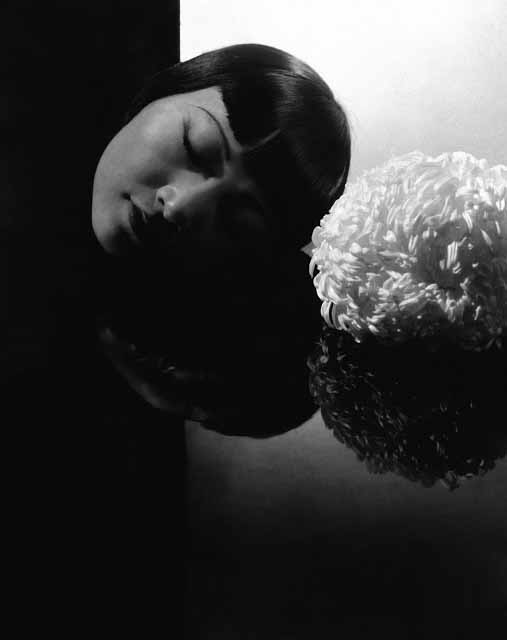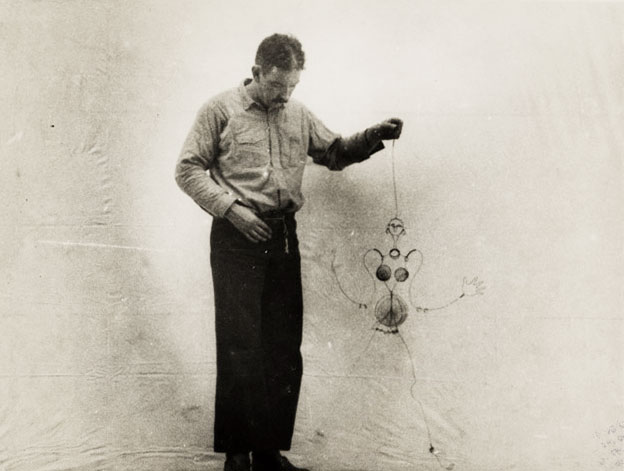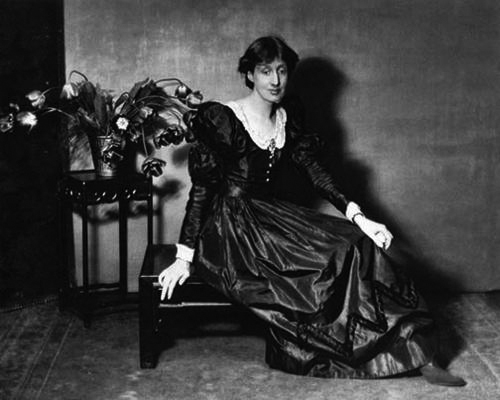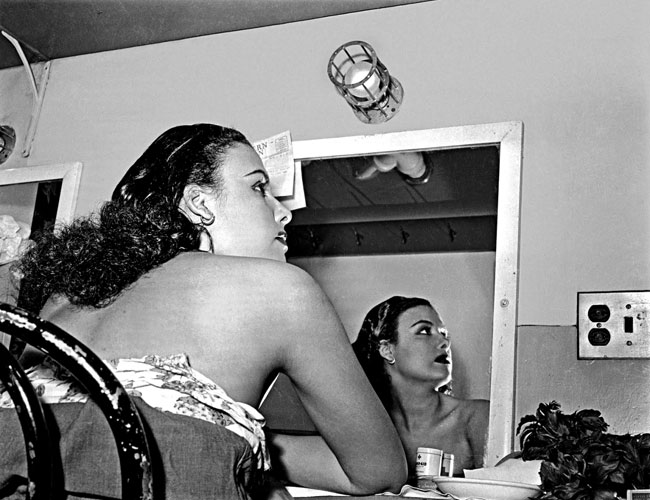— Do You See It? Well, It Doesn’t See You!

Tom Holert: A key point in both Second Skin: Josephine Baker & the Modern Surface (2011) and its accompanying essay “Shine: On Race, Glamour, and the Modern” of the same year is what you have poignantly and paradoxically called the “disappearance into appearance,” referencing the particular “shimmering, excessively ornamentalized performance” of Anna May Wong in the 1929 movie Piccadilly. This act of disappearing, this loss of visibility in derealizing hypervisuality, runs against our default notions of identity politics but seems to have much in common with notions of opacity in postcolonial literature and art. I am thinking in particular of Édouard Glissant’s (the name alone seems to invite inclusion in a discussion on shine and gloss!) work on créolisme that has been taken up by artists such as The Otolith Group and figured repeatedly in panel discussions on postcolonial realities in contemporary Africa. Would you consider Baker and Wong’s transcending of the racialized body by means of stagecraft and movie technology to be an anticipation of such postcolonial concepts?
Anne Anlin Cheng: Much of my recent work has been focused on shifting our attention away from the visibility of race to its visuality. Can we be blind to what we think is clearly visible? And, alternately, can that which is ostentatious disrupt visibility? I’ve found Glissant’s claim to the right to opacity and his insistence on opacity as a condition for the constitution of the other extremely effective in intervening against a depoliticized model of globalization and cosmopolitanism. But I also think the trope of opacity is particularly rich for thinking about the forms of derealized hypervisibility that figures like Baker and Wong demonstrate. In insisting that we approach racial legibility dialectically between the visible and the invisible, between appearance and disappearance, these early-century “race beauties” do anticipate or foreshadow “postcolonial opacity.” They also remind us that the euphoric, early-twentieth-century discourse around idealized transparency in a wide range of fields from science to technology to fashion to even law is in many ways a cover for a crisis in seeing.

TH: Rather than someone prone to be othered and fetishized in the very attempt at assuming an authentic self, in trying to be a person that demands recognition, Baker and Wong opted—on stage, in front of the camera—for a depersonalized state of glittering, gleaming, shiny thingness. Moving between commodification and resistant objecthood their performances prove to be a method for women of color not only to escape the traps of a sexist and racist gaze but also to deconstruct the collusion of celebritydom and subjecthood through an “insistence on subjecthood’s fundamental indeterminacy.” Is this critical displacement of agency to the very surface that is routinely considered by cultural critics as the site of depoliticization bound to the modernist moment that you focus on in your studies? Or is this historical focus a precondition for an interpretation that resonates with contemporary experiences of thingified subjecthood?
AAC: Yes, I do think objecthood can be both a symptom and an alternative form of escape for women of color negotiating the binds of commodification. (It could not be otherwise!) This dialectical relationship becomes particularly pronounced in the twentieth century when, as Bill Brown and others have put it, objects became things, when we are able to allow theories of “thingness” to disrupt the reassuring fantasy of our “natural” or “organic” personhood. At the same time, the twentieth-century object still bears the burdens and residues of colonial and imperial history. While the association between racialized femininity and superficial surface may be a very ancient one (consider, for example, the conflation between femininity and superfluous ornamentation since antiquity), it is the interface between racialized surface and the invention of the modern surface (as material, philosophy, and aesthetics) that really interests me. I argue in Second Skin that even as the dawn of the twentieth century seems to be promising us the fantasy of a brand-new “skin” in the diverse fields of medicine, psychology, technology, art, and architecture, that synthetic, shining new skin is in fact a rehearsal—a resurfacing—of the corporeally laden skin of the racial other. For example, I show that Adolf Loos’s notion of a sleek, unburdened, modern cladding is in fact a profound nostalgia for the very “primitive skin” that he denounces.
Even more importantly, the early twentieth-century fascination with pure surface must be seen as itself a delicate and profound moment when the separation between a (shallow) surface and an (authentic) interiority collapses. The modernists’ flirtations with the surface led them to confront the profound imbrication of interiority and exteriority, essence and covering, the organic and the inorganic. So the surface is unavoidably a political site of contestation over which human values are negotiated; the modernist surface of pure technological invention was always already steeped in a (colonial) dream about “impure” others.
TH: Baker and Wong, in your writing, become agents of a certain pedagogy of vision—or counter-vision. In this perspective their performances—as visual events—elicit, embody, and illustrate a multiple crisis: of visuality, of subjectivity, of value. They demonstrate the workings of a deconstruction, a methodology of undoing, particularly undoing the very aesthetics associated with colonial modernism. It’s very interesting that the effects of lighting and shininess they deployed to their advantage seem to have successfully avoided any primitivist, ritualist, ethnological interpretation.
AAC: One could say that Baker and Wong’s particular deployments of light and shine do not avoid primitivist, ethnographic interpretations; indeed, for most viewers then and now, these women are seen in the service of those interpretations. This is partially due to the fact that existing, dominant discourses on shine and shininess (i.e., Marxism and psychoanalysis) reinforce such interpretation; as Marx and Freud would tell us, shine is the lure of commodity or sexual fetishism. But my point is that these theoretical frameworks have also blinded us to the alternative workings and effects of shine.
When we trace alternative genealogies of shine, we find ways of theorizing the effects of light and shininess that resist precisely the concept of commodification. For artists like Brancusi and Moore during the interwar years, the notion of shine symbolized a host of ideas about auratic potential and originary radiance. More specifically, they relied on shine to release sculpture from its material condition and open it up to new meanings. For them shine has become, more than a description or a quality of light, the very medium or agent through which the visual and the sensorial merge. And in the realm of literature, we might turn to someone like Proust, for whom glimmers of light often signal moments of intense, ineffable aesthetic encounters that resist translation or redemption, and dislocate the subject.

Finally, I would suggest that the staging of the colonial fetish is always more complicated and fraught than what ideology would allow. In transit, in performance, in acting, the imperial souvenir is never simply pure cargo. Yes, it (or she) has been commoditized, but it (or she) has a wayward life of its own. And, on the other side, the master/voyeur/fetishist, in relishing and identifying with the colonial object, often risks being penetrated by that object. I argued in Second Skin that this is what happened to Picasso in his supposed appropriation of primitivist fetish, and this “porousness” of the master subject offers another way to understand Le Corbusier dressed up as Josephine Baker at a ball which they both attended.
TH: Have you found evidence of a feminist, decolonial, critical thinking-doing, in the past or present, that takes immediate, literal inspiration from these models of mimetic resistance and self-empowerment by emphasing surface effects? In other words, has Baker and Wong’s pedagogy of counter-imagination formed any school?
AAC: I think my work is very much about a way of reading. So we might revisit many texts (filmic, literary, theatrical) in order to reconsider women’s relationships to the question of surface. It’s not a coincidence that female performers of color from Baker to Wong to Lena Horne in the early twentieth century should be constantly playing with the tension between the fantasy of personality and the promise of authenticity, for their commodity and their agency both reside on the surface of their skins. Shane Vogel has written beautifully about Lena Horne’s “impersonal voice” in a way that is aligned with how I think of surface effects. We can also turn to a canonical figure like Virginia Woolf and trace a feminist reworking of surface-agency. Although Woolf’s work is known for its celebrated “turn inwards,” she was fascinated by surfaces: the “envelope” of life, or her other famous formulation, “dress consciousness.” If women have been long sutured into their appearance, then appearance is the site on which they might contest their assigned corporeality.

I should underscore that the forms of agency I’m interested in tracking are not “self-empowerment” in the traditional sense. As Judith Butler has taught us, the ideals of subversion and self-empowerment have their limits and can reproduce sinecures of their own. I’m not interested in locating redemptive, subversive agency as an act of self-will or intention because the women whose work haunts me are those for whom will and intention have been severely compromised. (We can never forget that these women are subjects of color making their way in a colonial and imperial world, nor can we forget that they worked as performers, with all the complications around what it means for them to act.) Nor do I think the answer is to offer up the real or the authentic as antidotes to misrepresentations. (This is why I did not write a biography about Baker or Wong.) On the contrary, I want to take seriously the question: What does agency look like in a crisis of consent? Can we think about agency when the human subject is in question? The “counter-imagination” that you elegantly identify is not a set of proscriptive strategies on the part of the women in question, but a complex interaction produced at the intersections of performer, performance, medium, and the practice of reading.

TH: I am interested in the hermeneutics of your reading of surfaces and the inevitability of embodiment in the context of a racialized culture industry. The phenomena of light and shine, of glitter and gloss, are ontologically ambiguous or multivalent. They are at once indexical facts that can be explained (away?) by referring to certain laws of physics and optics, and productive in terms of iconic values, of semiotic meaning and visual-economic value. How does the sign-value of a radiating body on stage and/or in the film studio correlate with the alienating, objecthood-reclaiming, and therefore liberating function that you identify in these performances? I couldn’t help thinking of the blinking sardine can in Lacan’s famous tale. The uncanny agency of the blinking can pushes the subject of the gaze to the brink of nothingness, the ultimate horror. Do the sparkling bodies of Wong and Baker frighten the colonial, male gaze in a similar way?
AAC: It’s interesting that you mention Lacan’s sardine can because I’ve always thought of that passage as a critical analog for how I think about what you’re calling “the brink of nothingness” and its relation to the question of (human and nonhuman) agency. The confrontation with that brink—provoked by Wong and Baker’s shininess for the male, colonial gaze and by the can for Lacan—produces not so much horror (because that implies some measure of conscious confrontation) as I think an ineffable and profound dislocation. I think of the sardine can and the notion of the gaze that it dramatizes as not a corrective or redemptive moment, per se, but as a provocation, a call to an ethical encounter.
Let me explain. In a series of essay grouped under the title “Of the Gaze as Objet Petit a” in The Four Fundamental Concepts of Psychoanalysis, Jacques Lacan theorizes the intimate relationship between subjectivity and objecthood. In meditating on the political and ethical relationship between bodies in a social landscape, Lacan turns to an extended metaphor about vision and suggests that there are three, rather than two, agents in the visual field: not only the seer (the subject) and the seen (the object) but also a third term, which he names the gaze, which is of course a crucial key in Lacan’s extended critique of the cogito.

Significantly different from the notions of the Freudian scopic drive or the “gaze” as currently deployed in film theory (both implying a looking based on a subject position, be it “male” or “voyeur”), the Lacanian gaze is designed precisely to expose the illusion that founds such a position in the first place. By distinguishing the eye’s look from the gaze, Lacan designates the latter to refer to the undoing of our scopophilic power by the materiality of existence (the real) that always exceeds and undercuts the structures of the symbolic order. The gaze as a third agent is therefore unlike any agent we would normally conceive, for it is crucially an agent without agency. It is the thing that rips open our illusion of subjectivity, our certitude as seeing and seen subjects. Lacan gives us an example through the visual experience of looking at a painting by Hans Holbein called The Ambassadors (1533) in which the viewer imagines he or she is in control of the looking, until he or she notices a blot at the bottom of the canvas which only by looking at it from the side can one see that it is a skull looking back at the viewer. We, the viewers, are displaced from the mastery of our looking and are looked back upon, but not by another person—rather, by an impersonal object. To Lacan, this disconcerting experience is the closest a subject can come to confronting the gaze and the real that it invokes. Thus the gaze is an agent in the visual field, though it has no agency; in fact, its presence serves precisely as a critique of our agency, our illusion of subjective and visual mastery.

In the oft-cited autobiographical anecdote about the sardine can, Lacan relates how as a “young intellectual” he worked one summer in a small fishing village as an apprentice. He very much wanted to be like the other fishermen, but one day, out on the sea, a fisherman called Petit Jean pointed out a floating sardine can in the water and said to young Jacques: “You see that can? Do you see it? Well, it doesn’t see you!” Lacan did not find the joke funny. He was in fact rather offended by it. In puzzling out his own reaction, Lacan tells us that this joke became emblematic of his coming to his own invisibility in the field of the visual. He realizes that “the picture, certainly, is in my eye. But I am not in the picture.”1 Jacques Lacan, The Four Fundamental Concepts of Psychoanalysis, trans. Alan Sheridan (Paris: Éditions du Seuil, 1978), 96.The sardine stands as a symptom of the gaze, which unravels the illusion of the subject by exposing how the seer is seen—not seen as in “recognized” but as in being placed as an object in the field of vision—that is, seen as the unseen. As Lacan tells us, “And if I am anything in the picture, it is always in the form of the screen, which I earlier called the stain, the spot.”2 Lacan, 97.
This moment holds profound ethical implications for human sociality and its implications about power. As Lacan continues: “This is something that introduces what was elided in the geometrical relation [that is, the illusion of understanding ‘I’ and ‘you’ as two mutually seeing points in a given field of vision]—the depth of the field, with all its ambiguities and variability, which is in no way mastered by me.”3Lacan, 96. Emphasis and commentary in brackets added. It is not a coincidence that this parable about the loss of visual and subjective mastery is also a fable about assimilation. Lacan, after all, was “slumming it” that summer. There are masculinist, economic, and class competitions in this story about his relationship to these fishermen in a dying industrial town. The triangulated encounter with Petit Jean, the realization of the sardine can’s inhuman eye, and his own subsequent marginalization are inextricably bound up with his desires to belong and be recognized. Lacan confesses, “In short, I was rather out of place in the picture. And it was because I felt this that I was not terribly amused at hearing myself addressed in this humorous, ironical way.”4 Lacan, 97. Lacan’s failure to pass as “one of the guys” propels this insight into the objectness of human experience that subjectivity is designed to disguise. Crudely put, Lacan’s sudden insight into his own objectness is itself colored by a very subjective response to being socially excluded.
Given that we cannot live in the reality, so to speak, of the gaze (nor can a human subject wield the gaze like a weapon)—except perhaps as elusive moments of radical subjective dislocation, as demonstrated by the sardine can story—the answer is obviously not to claim access to either full subjective agency or complete subjective relinquishment, but to acknowledge that human relations are structured along that difference. What is revealed by the sardine can’s not-seeing eye is Lacan’s own (barred) desire to be inscribed in the (subjective) picture. Lacan discovers that he is “not in the picture” in the most significant and philosophical sense of the phrase, but this discovery can only be facilitated by his very desire and need to be so. This complicity, for Lacan, encapsulates the ethical dimension in the realm of desire. And it is precisely this vertiginous encounter with one’s own objectness that I propose the fetishistic encounter labors to deny but nonetheless provokes. Baker and Wong’s “shine” then is not a weapon that they wield, but neither is it a mere symptom of commodity fetishism. Instead, its light gestures us toward the possibility of this fluctuation between being a subject and being an object.
×


